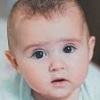|
Ages/Stages
|
Developmental Factors
|
Examples of a Positive Approach to developmental factors to manage behavior
|
|
Infant/Toddler
|
Children this age:
- Actively explore environments
- Like to take things apart
- Have limited verbal ability, so biting or hitting to express feelings is common
- Like to dump things over
|
Children in this stage tend to dump and run, so plan games to enhance this behavior in a positive way. Have large wide-mouth bins for children to practice “dumping items” into and out of. This strategy redirects the behavior of creating a mess into a structured activity to match the development.
|
|
Older Toddlers
|
Children this age:
- Need to run, climb, push and pull
- Are incapable of sharing; waiting or taking turns
- Express beginning independence
- Work well with routines
- Say “no” often
- Comprehend more than they can verbally express
|
Teachers of this age often find children trying to climb up on tables, chairs, and shelves. Incorporate developmentally climbing equipment and create obstacle courses to redirect activity into positive behaviors.
Avoid using the word “no” and create expressions that teach what to do instead of what not to do.
|
|
Young Preschool
(3-4 years)
|
Children this age:
- Like to be active
- Are curious and ask many questions
- Express new fears and anxieties
- Have little patience
- Can clean up after themselves
- Can take some responsibility
- Seek adult approval
|
Young preschoolers become curious and create many misconceptions as they create new schemas for understanding concepts. Listen to ideas sensitively address them quickly and honestly. Model exploration and engagement in new activities (especially ones they may be fearful of engaging in)
|
|
Older Preschool
(4-5 years)
|
Children this age:
- Are highly active
- Can be “bossy”
- Have an active imagination
- Exaggerate stories
- Often use “toilet words” in silly ways
- Start things but don’t always finish
|
Ask the children to create new silly, but appropriate words to represent emotions rather than focusing on the “bad” words they use.
|
|
Young School-Age
|
Children this age:
- Are able to problem solve on their own
- Begin to understand responsibility
- Think in terms of fairness
- Attempt to negotiate
|
Fairness is a big issue for this group so working with this age group, a teacher should sit with children to develop “rules” and “consequences” so they can take ownership of behavioral expectations
|



